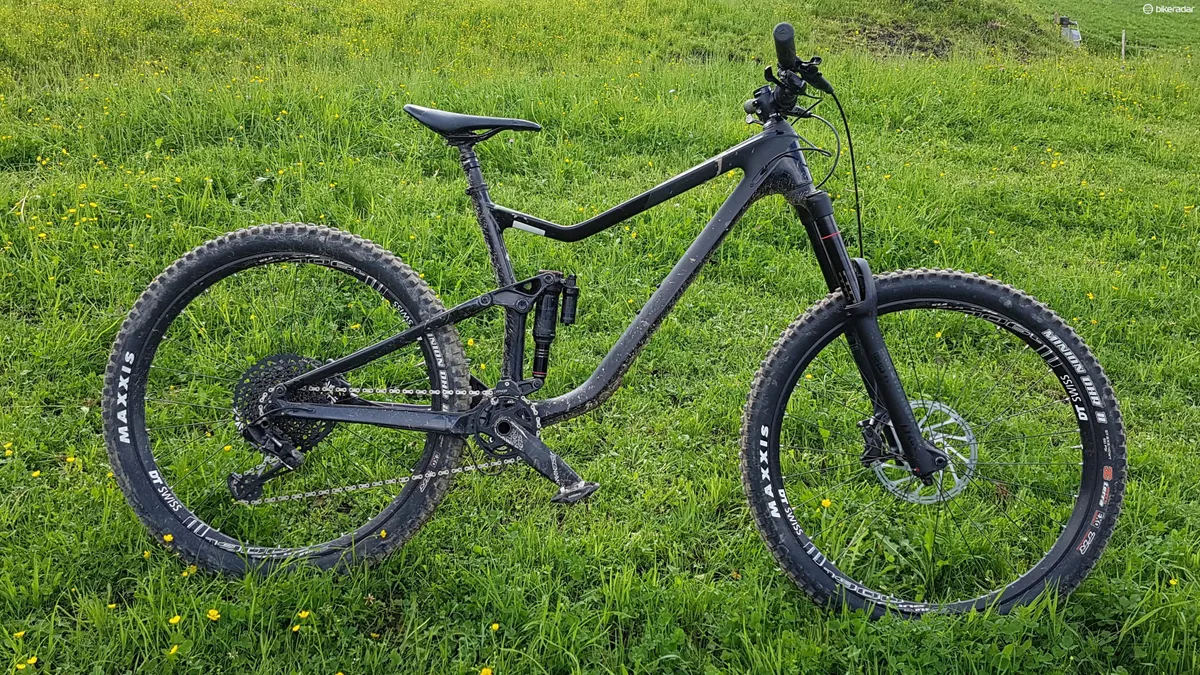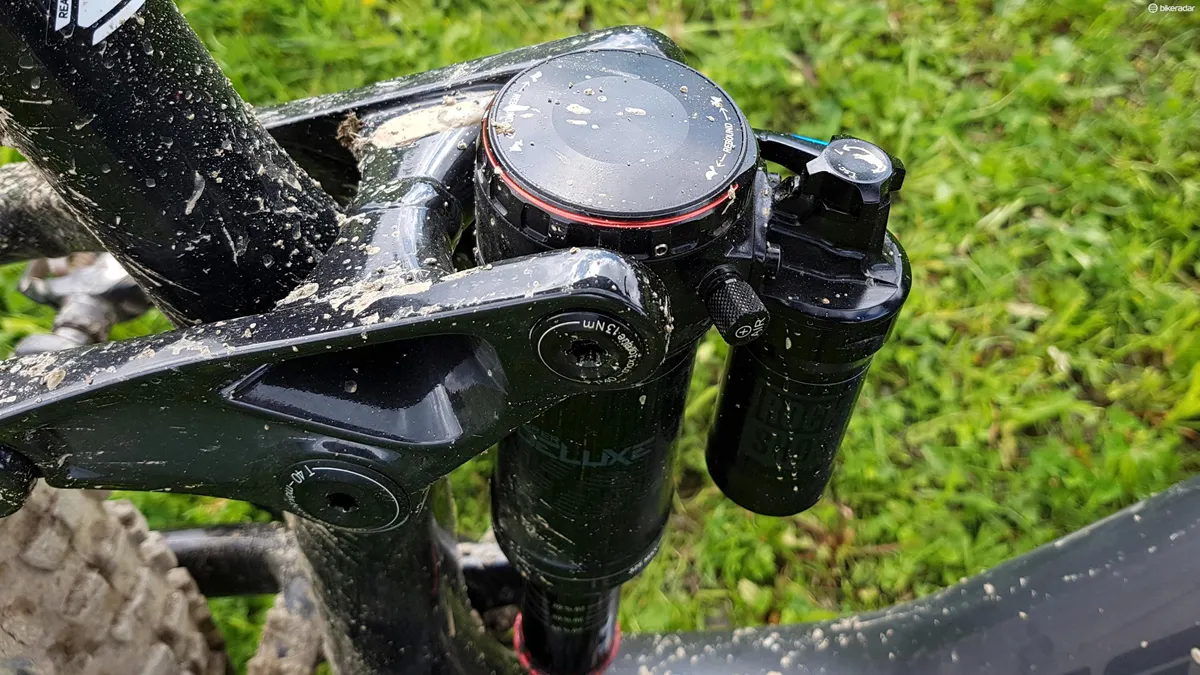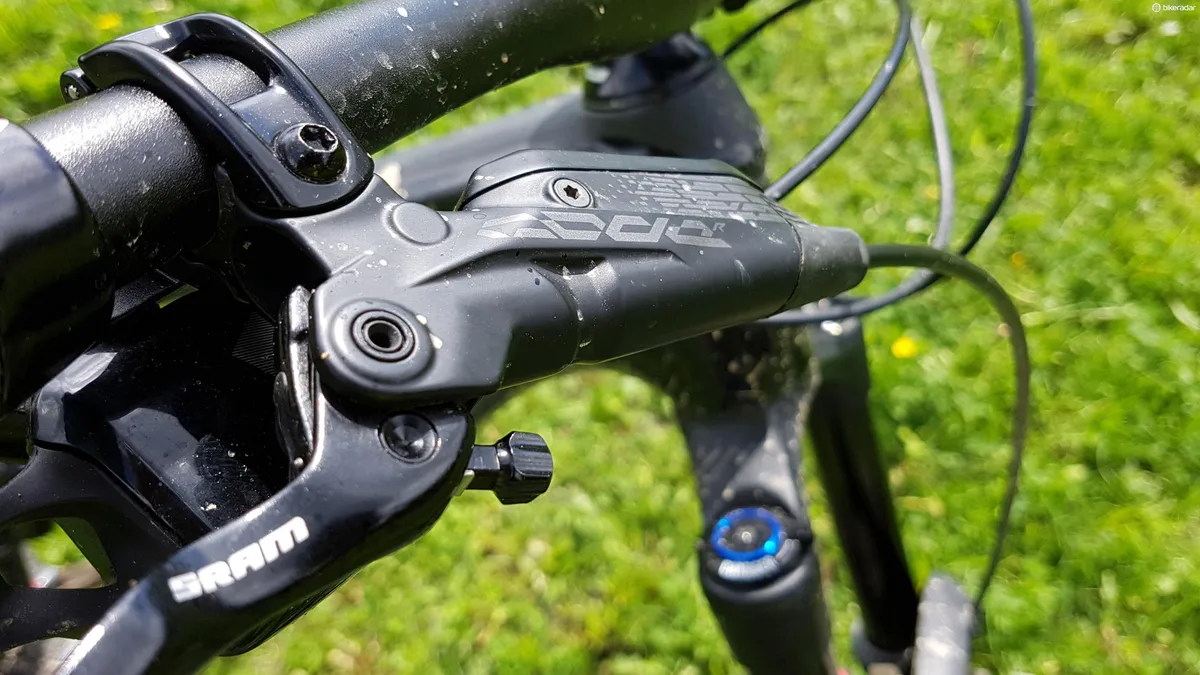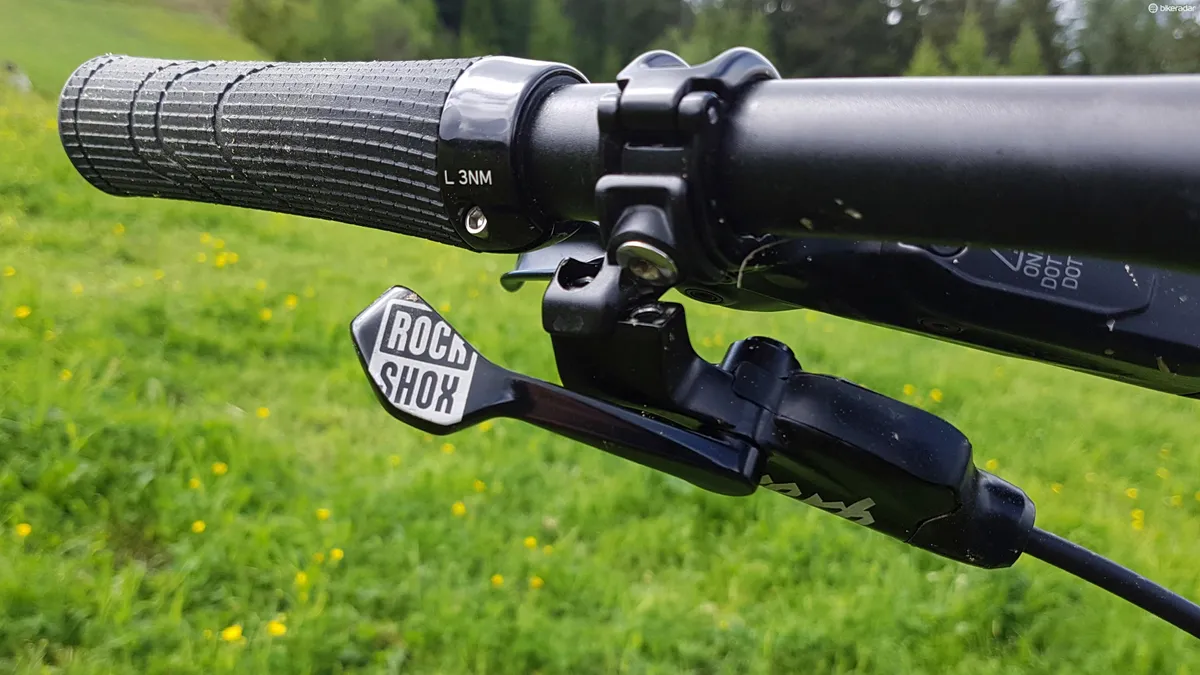Merida's One Sixty range has, as you'd expect, 160mm of rear end travel, placing it firmly in the enduro family of bikes. In the past, Merida's mountain bikes have never made a massive splash, but in recent years as new models are released, they're quietly making a bit of a name for themselves and I've taken a quick look at the new carbon front-ended 7.8000 model.
You might not know it, but Merida is one of the biggest bicycle companies in the world, owning shares in other brands and building bikes for a whole host of people. As such, it's no surprise that the carbon frame is packed with features.
Most companies have their own 'special' carbon, but in the One Sixty's front triangle it's CFA carbon that's used — the usual claims are there, lighter, stiffer, etc. In the flesh, it's a clean looking, smooth frame, and with fully guided internal routing it should be easy to work on. The back end is regular alloy.
The 160mm of travel is based around a floating shock design, with the trunnion mounted RockShox Super Deluxe RC3 sitting between two moving points, rather than one end being in a fixed position. This helps Merida control the stroke rate as it travels through its suspension and theoretically can help with small bump sensitivity.

As you'd kind of expect these days, the back end is Boost spaced with 148mm between the drop outs, and this is matched up front with a 110mm spaced RockShox Lyrik RC in 170mm guise.
Merida One Sixty 7.8000 spec overview
Aside from the aforementioned suspension, the One Sixty 7.8000 has a pretty decent spec list.
Joining the SRAM/RockShox suspension is the new Code brake. The Code has the same S4 technology, for better heat management, that's been trickling into Guide brakes over the past year — that's the heat shield between pads and caliper, and the increased airflow through the caliper itself.
The caliper and lever have an increased volume, compared to the Guide, again for better control as things get hot. SRAM has kept the same pads from the old Code to the new, which is good for those looking to upgrade and who have stocked up on pads.
The bike is driven along by the new SRAM GX Eagle groupset with the 10-50t cassette — have a look at our GX Eagle First Ride and our video guide to GX Eagle.
Merida has chosen the more gravity orientated Descendant crank for this build, while a MRP chain guide adds security.

RockShox's Reverb dropper needs little introduction. On the One Sixty it comes with Merida's new under-bar lever from stock. This is a noticeable improvement over the previous plunger design, with a smooth, mid-weight action.
Keeping the bike rolling is a pair of DT Swiss M1900 Spline wheels, and the bike rolls on Maxxis Minion DHR II 2.4" WT (Wide Trail) tyres front and rear.
Geometry
Geometry is key to a top performing bike and this is where, arguably, Merida has fallen down in the past, sticking to more traditional shapes. Fortunately, it's done a good job here and, while it's not revolutionary, the numbers stack up.
The Large has an impressive reach of 475mm, and it's mated with a properly stubby stem. The head angle is 65.3 degrees, pretty much on the ball for an enduro bike. The 1,237mm wheelbase is relatively long, although the 6mm bottom bracket drop isn't super low. The chainstays are short at 430mm without being ridiculous.
All in all, not bad figures, Merida.
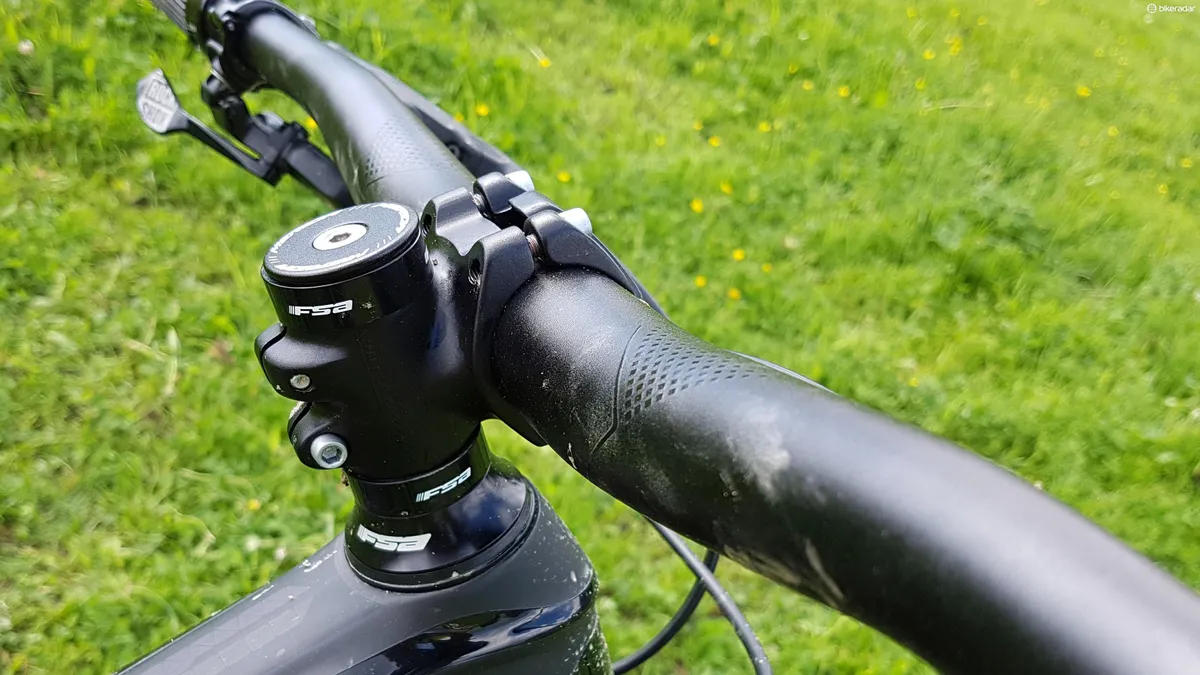
Ride impression
I rode the Merida in the Tyrol mountains in Italy and on mostly bike-park style trails.
The length gives stability and confidence on steep trails, while the reasonably slack head angle and the 170mm fork punts the front wheel a fair way ahead of the bike.
This lets you keep your weight forward on the bike, pressing the front wheel into the ground, and that confidence is compounded by the impressive grip levels on offer from the wide, relatively well supported front tyre.
The frame is stiff, giving decent feel and control in corners. There's little noticeable flex in the front end, boosting cornering precision. Power delivery to the back end is good, although I made use of the shock's lock-out on a few fire road transfers and it was certainly happy to bob into its travel while pedalling.
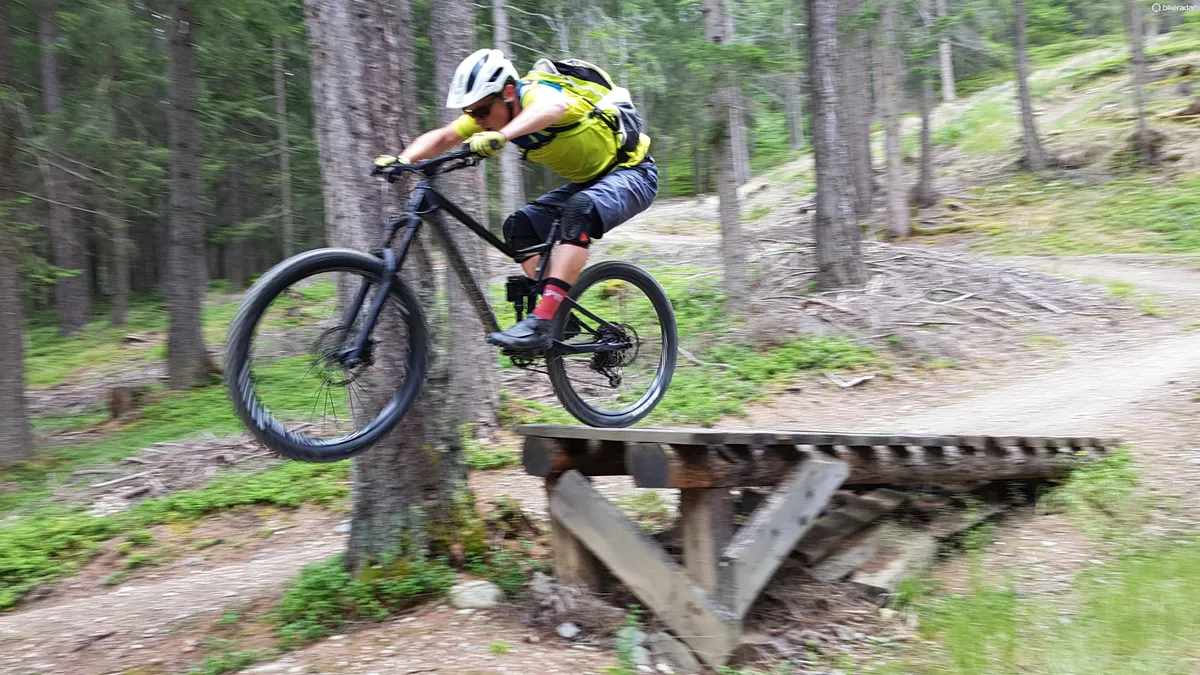
It took me a little while to get the feel of the suspension. I'll admit that the back end, despite plenty of playing around with it, never excited and felt a little dead, at least on my initial rides.
Reducing rebound damping at the back gave a bit more life to the bike, but this does make it a tiny bit bucky going over lips — I found a sweet spot in the end, but was never blown away. The bikes were fresh out of the box, so the suspension could probably do with a bit of bedding in, but the rear end felt, perhaps, a touch over-damped.
The floating design of the rear shock does give that supple feel, and the feeling of more travel than you might expect, which combines to give a sofa-like ride rather than one rich with feedback.
In many ways though, this probably helps the bike maintain speed — if you're not fighting the bike and letting it just get on with it, it'll likely let you go faster. However, if you're looking for a playful bike to hop and pop around on, perhaps this isn't it.
The other speed boosting benefit of the suspension is the traction on offer. With the suspension dealing equally well with small and larger impacts, the rear tyre remains doggedly stuck to the ground, until you choose to get it airborne.
The low pressures afforded from the 2.4" rubber aids this, while the aggressive tread on the Minion DHR means both the central tread and the shoulder get decent levels of purchase on the dirt. Both cornering speed and braking effectiveness are improved, leading to higher speeds.
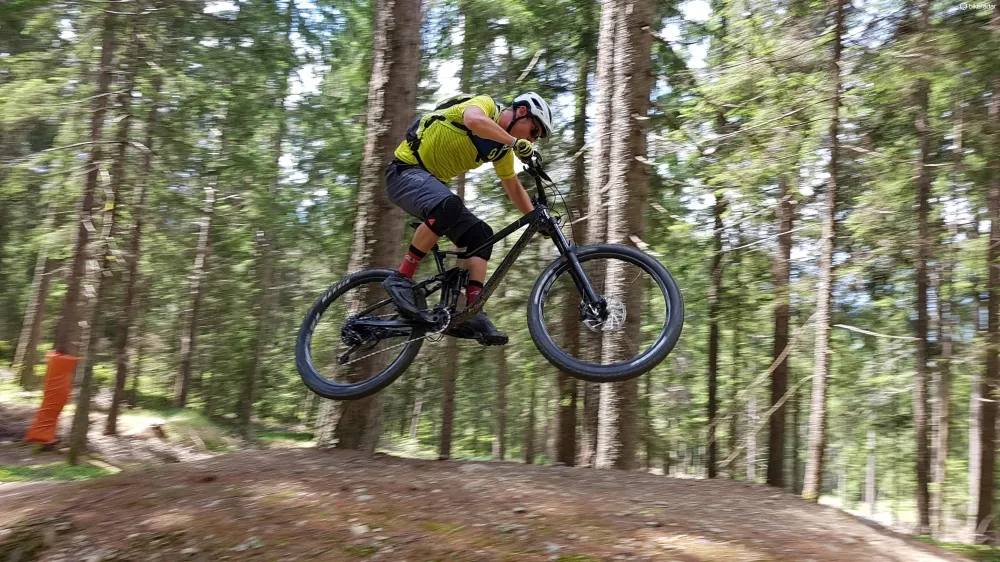
Looking at the spec, there are very few weak points. Everything seems to gel well together, no surprise given the majority of the key components are all from SRAM.
If I'm being picky, the Code brakes don't have quite the same bite that I've become used to, riding Shimano-braked bikes previously.
I've got a bike going through the wringer back in the UK, so look out for a more in-depth review soon.
Merida One-Sixty 7.8000 prices, sizes, availability
I'm still waiting on prices and availability for the UK / US / Australia, but I'll update this ASAP.
